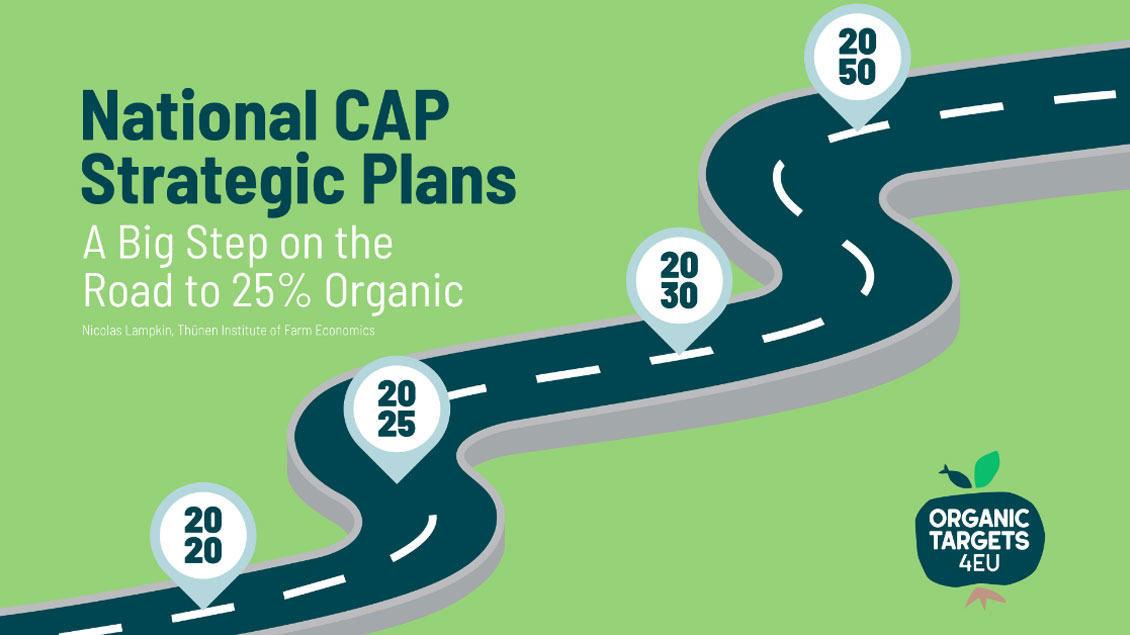
By the end of 2022, EU Member States had finalised their CAP Strategic Plans, including organic support from 2023 to 2027. For the first time, all EU countries are providing support for organic farming and have set targets for the organic land area by 2027 or 2030.
Since 1990, most EU Member States (MS) have supported the conversion and maintenance of organic farming as an agri-environmental measure, which also provides rural economic development benefits thanks to the organic market. This support has been evaluated under previous EU and German government-funded research projects (Lampkin & Sanders, 2022). The EU Regulations defining organic farming during this period have provided a legal basis for both policy support and market development. This has resulted in a steady growth of the organic sector in EU over the last two decades, with the EU27 land area growing from a little over 4Mha in 2000 to almost 15Mha in 2021 (Figure 1).
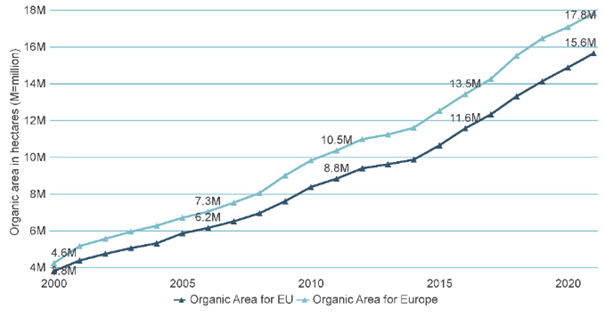
Figure 1. Growth of organic farming in the EU27 and rest of Europe, Mha, 2000-2021. Source: Willer et al., 2023
From 2023 to 2027, a new CAP framework has been put in place, which sees MS taking responsibility for defining their own actions, and the EU focusing on defining strategic objectives for the CAP, including for climate and biodiversity. MS must show how their actions will contribute to these objectives. In addition, the EU’s Green Deal for climate, through the linked Farm to Fork and Biodiversity Strategies, has set a target of 25% of EU farmland to be organic by 2030. The EU organic action plan from 2021 also encouraged MS to include specific strategies for organic support in their CAP SPs.
Our first analysis of the national CAP Strategic Plans (SPs) finalised in 2022 indicates that MS are aiming to almost double the area supported by 2027 compared with 2018 (Table 1). For the first time, all MS will provide financial support for organic conversion and maintenance, and all MS have set targets for the land area to be organic, either in their CAP SPs or in their national organic action plans (OAPs).
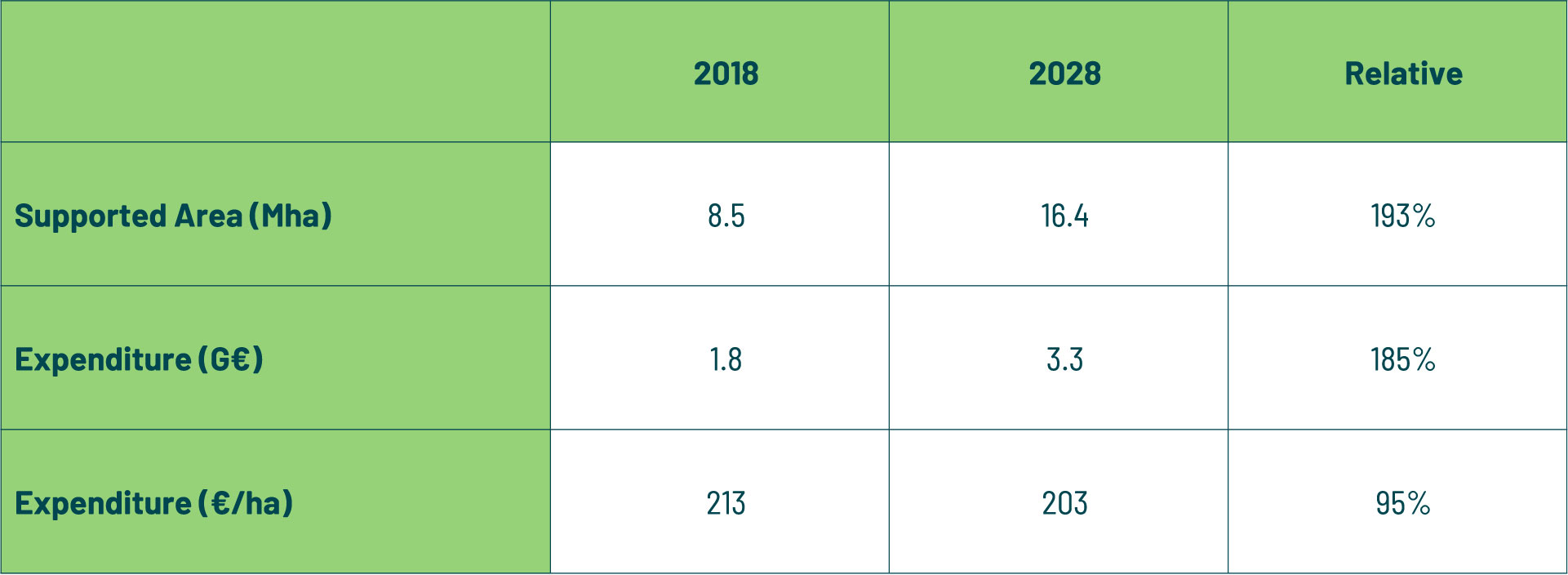
Table 1. Comparison of 2018 (actual) and 2028 (planned) supported organic areas and expenditure. Source Lampkin & Rehburg, 2023 in progress.
If successful, the organic area in the EU could reach 15% of farmland by 2027, but this still leaves a big gap to bridge to get to 25% by 2030 (Figure 2). Despite this, the final agreements in most cases represent an improvement compared with the proposals submitted by MS a year earlier. The EU Commission’s commitment to delivering its organic target, despite all the other policy challenges in 2022, needs to be acknowledged.
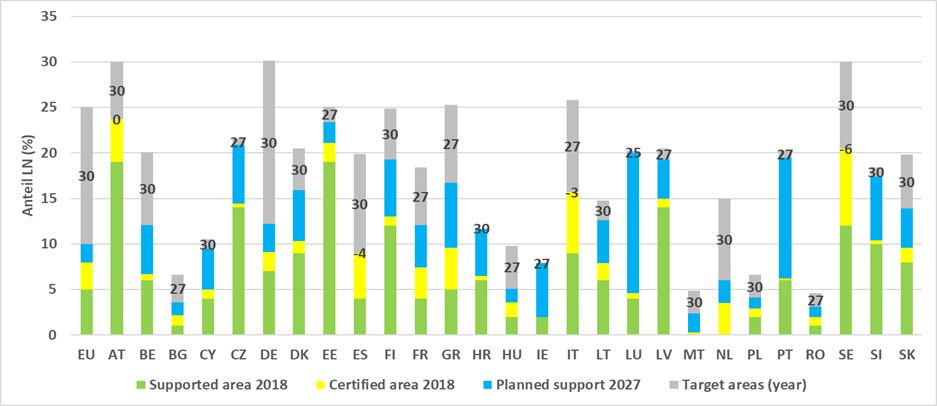
Figure 2: Certified and supported organic land areas, % of farmland, in 2018 (actual) and 2027 (planned). Numbers indicate target year, -ve values indicate 2027 planned support less than 2018 certified area. Source: Lampkin & Rehburg (2023 in progress) and Lampkin & Sanders (2022)
MS have also demonstrated an increased willingness to implement national OAPs, some for the first time, covering the period from 2023 to 2030 (Figure 3, green bars). As part of our research, we will be comparing the current/planned OAPs with previous plans (Figure 3, blue bars) to see how they have adapted to the current challenges. We will also be including an analysis of plans for organic aquaculture.
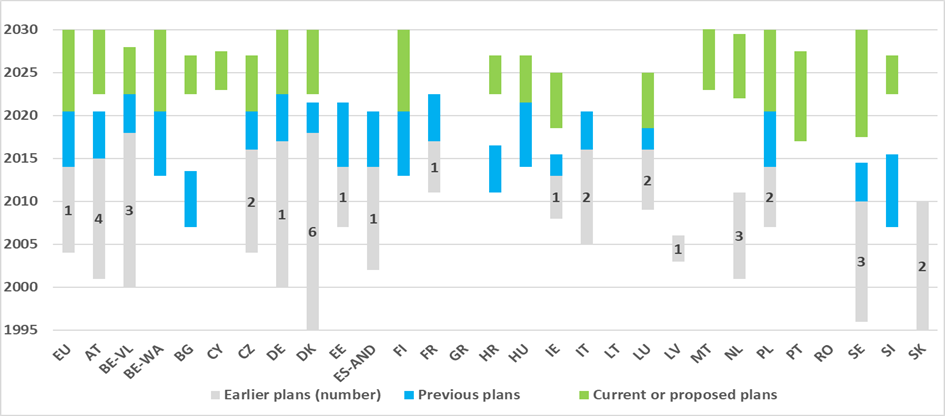
Figure 3: Overview of organic action plans in EU Member States, 1995-2030. Source: Lampkin & Rehburg (2023 in progress) and Lampkin & Sanders (2022)
The report on this part of the project is due to be completed by mid-2023, and we hope to make it available soon after.
Author:
Nicolas Lampkin, n.lampkin@thuenen.de
Thünen Institute of Farm Economics, www.thuenen.de
Relevant Links:
-
Lampkin & Sanders, 2022
https://orgprints.org/id/eprint/45159/1/lampkin-sanders-2022-Thuenen-Working-Paper200.pdf -
Willer et al., 2023
https://www.organic-world.net/yearbook/yearbook-2023.html -
CAP Strategic Plans
https://agriculture.ec.europa.eu/cap-my-country/cap-strategic-plans_en -
Farm to Fork Strategy
https://food.ec.europa.eu/system/files/2020-05/f2f_action-plan_2020_strategy-info_en.pdf -
EU Organic Action Plan
https://agriculture.ec.europa.eu/farming/organic-farming/organic-action-plan_en#organicsintheeu